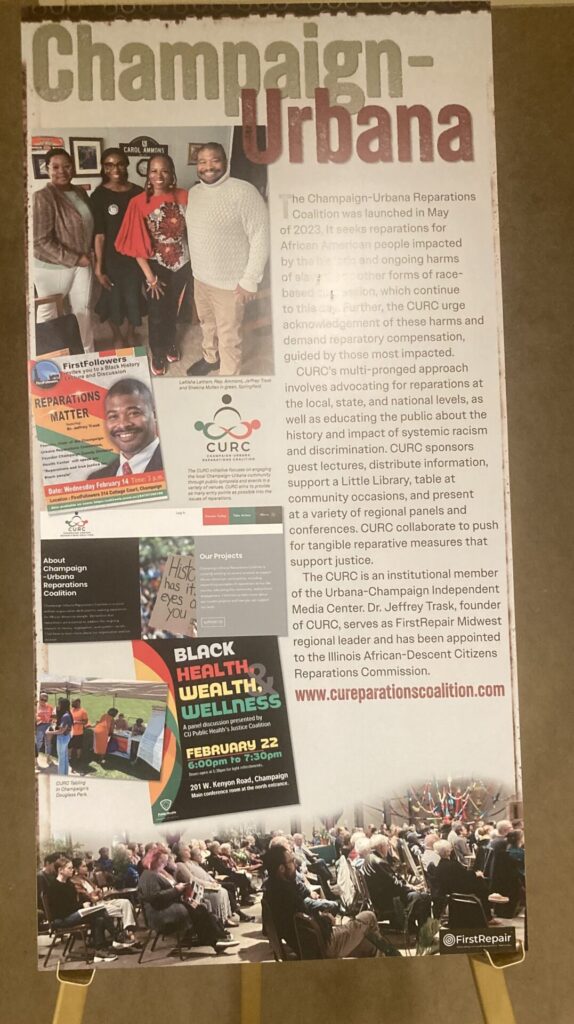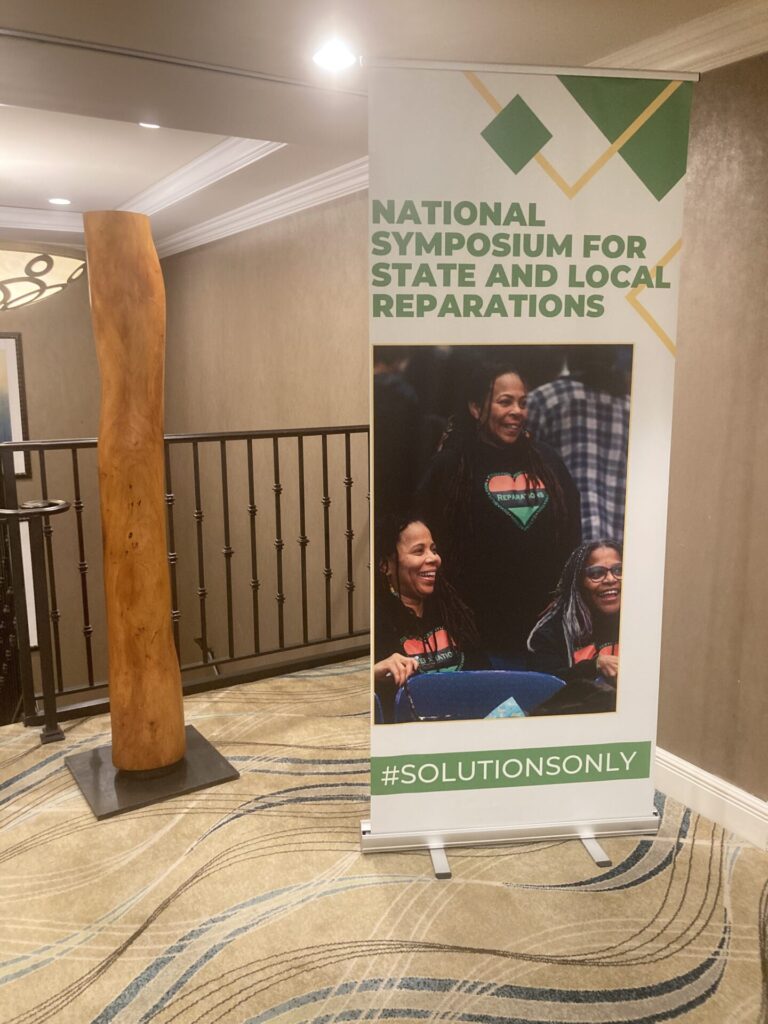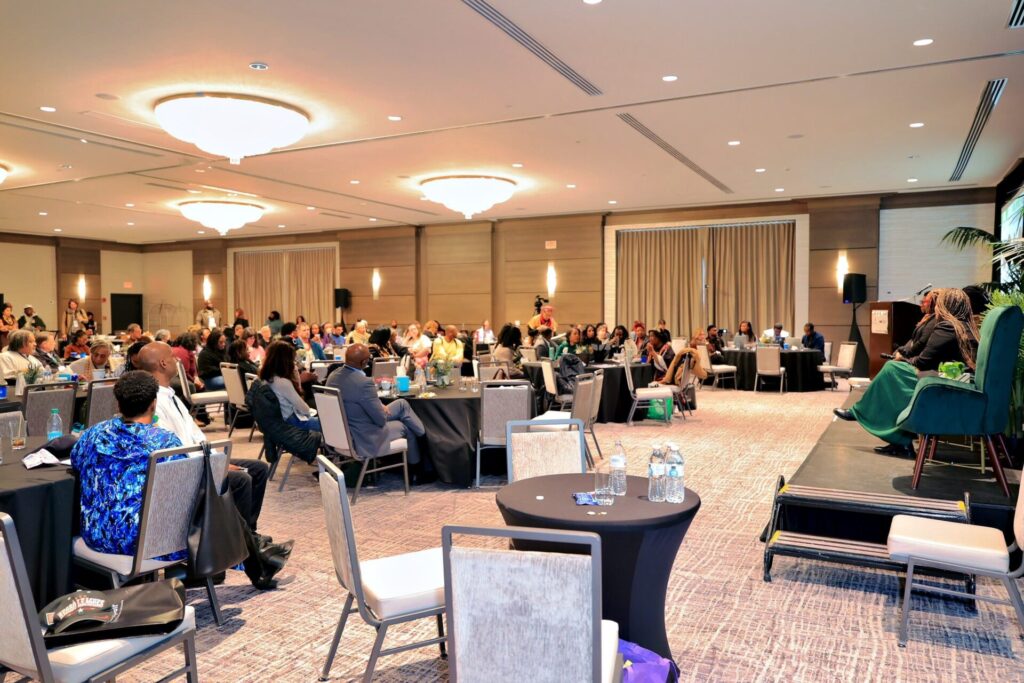In December 2024, I attended the National Symposium for State and Local Reparations in Evanston, IL. I typed up seven pages of notes, with links to many phenomenal organizations, but here are some key takeaways.
- There are talented and committed people from all over working in the reparations movement, in or with an exciting array of organizations.
- If we in the Champaign-Urbana Reparations Coalition (CURC) need help with any of our local efforts, there is a whole community of practice to tap.
- Diverse sources of funding exist; some “funding” could be obtained without necessarily raising money: tax credits, debt dismissal, land trusts, cooperatives, rent release for Black businesses, credit score elimination, reimagine 501(c)4’s, reappraisal of housing to address over-assessment. An example of the latter in Detroit: https://www.dignityrestorationproject.org/
- Going beyond financial compensation could take many forms, including provision of food, regular sessions about history, block parties
- “We can’t build what we can’t imagine.” (Walida Imarisha)
- “Harm wasn’t linear, repair isn’t linear.” “Black people are the experts of their own repair.” “You can’t heal what hasn’t been revealed.” (Reparations Narrative Lab)
- Keep forming alliances to increase power and leverage.
- Find a concern that inspires someone to act and then build from programming to systems change. (ie, soup kitchen to food insecurity through a lens of repair)
- Move from curious to committed to active in exchanges about reparations, engaging people initially with issues about which they care and are curious.
- Millennials are the biggest percentage of the Black community; they don’t remember Jim Crow and struggles around integration. We need to supply that narrative. (Tillery)
- Important to say the words, Diversity Equity and Inclusion, rather than gloss over the terms with “DEI” and to promote a continuum of race-conscious policies and programs (Lisa Holder)
- All of us working in the reparations movement can and need to be a part of an “Evaluation Community of Practice” to help build a broad picture of successes and challenges.
- A culture of repair can be a draw for residents: it can help retain families and positively affect the environment
- Use TikTok and other social media to communicate effective messages about historical context, successes and solidarities. (Garrison Hayes) https://www.tiktok.com/@garrisonhayes/video/7412648697215061294?lang=en
- Faith communities and non-profits are crucial partners to governments. This Instagram video tells of an Interfaith Group that raises money in Evanston to supplement reparations https://www.instagram.com/robin_5th_ward/reel/DDVRU_wv985/
- We need consistent messaging across the movement. Hashtags, for example, could communicate commonly agreed-upon terms
- A mass movement puts the issue on the map for politicians, both in terms of “cover” (many supporters) and pressure
- Wellness stipends to support health of organizers are a good idea!
For more information, FirstRepair has a lot of resources on their website; we have some on ours at cureparationscoalition.com
Below is a list of links to some of the organizations represented at the symposium, in no particular order.
Dignity Restoration Project https://www.dignityrestorationproject.org/
Liberation in a Generation https://www.liberationinageneration.org/
BLIS (Black Liberation-Indigenous Solidarity) Collective, https://www.bliscollective.org/
Reparations Narrative Lab https://www.reparationsnarrativelab.org/
New Jersey Institute for Social Justice https://njisj.org/
Seven Mountains LLC https://www.seven7mountains.com/about
Reparation Education Project https://www.reparationeducationproject.org/
Reparation Generation https://reparationgeneration.org/
Detroit Justice Center https://detroitjustice.org
Alliance for Black Equality https://www.allianceforblackequality.org
Tulsa Black History Saturdays https://blackhistorysaturdays23.carrd.co/
Reparations United ReparationsUnited.org




